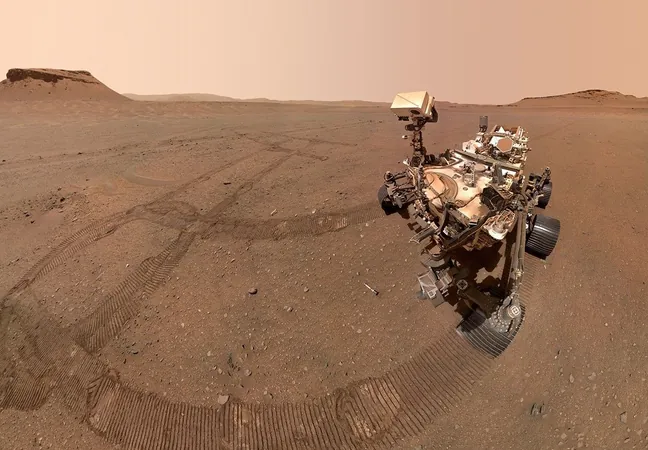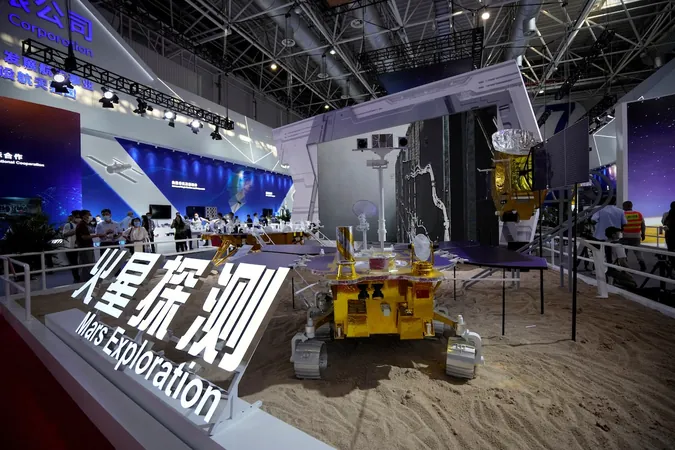
Perseverance Faces Steep Challenges as Sample Supply Runs Low on Mars Mission
2024-11-10
Author: Sophie
NASA's Perseverance rover is currently navigating the most ambitious phase of its mission yet, as it embarks on its fifth science campaign—a significant climb up the western rim of Jezero Crater. As the rover tackles challenging terrains, it continues its mission to collect surface samples and search for ancient signs of microbial life. The Perseverance team anticipates that the rover will crest the crater rim by early December.
However, the journey isn't without obstacles. The crater's terrain has turned out to be more slippery than expected, significantly hindering the rover's ascent. The uneven ground, comprised of loosely packed dust and sand with fragile crusts, has led to unexpected wheel slippage. On several occasions, the rover has only managed to cover half the distance it could have on more stable terrain, and during one particularly steep stretch, it made it just 20% of the way on a planned route.
Camden Miller, a rover route planner at NASA's Jet Propulsion Laboratory in California, explained the rigors of this mission: “Mars rovers have driven over steeper and more slippery terrains, but this combination and scale are unprecedented. For every two steps forward, there has been at least one step back.” As the team analyzed the situation, they began to devise strategies to optimize the rover's movement, including driving in reverse to enhance traction. Testing has also involved cross-slope and switchback driving techniques, which proved somewhat effective, but the approach towards the northern edge of the crater showed the most promise due to larger, more stable rocks.
As they strategize to navigate this demanding environment, reaching the top of the crater rim remains a priority for scientists eager to seize the unique scientific opportunities that lie ahead. The rover is on course for Lookout Hill, where it will have to trek an additional 450 meters to reach Witch Hazel Hill, a site of interest thought to contain distinctive light-toned bedrock.
Throughout its mission, Perseverance has been diligently collecting samples of Martian soil and rock, depositing them into one of 43 sample tubes intended for future retrieval by another mission. To date, it has collected and stored 24 samples, along with one atmospheric sample and three “witness” tubes to capture potential contamination.
Initially, the team planned for a minimum of 31 sample tubes, but as risk assessments progressed, they expanded this to 43, preparing for the potential loss of samples during exploration. Now, nearing the completion of four years on Mars, Perseverance has 11 empty sample tubes ready for collection, along with two empty witness tubes. In a recent operational decision, two sample tubes were retired due to the risk posed to the rover’s robotic collection arm by their position.
As Perseverance prepares to crest the crater rim in December, anticipation builds for the next phase of its scientific journey, which promises new discoveries and insights into the history of Mars. Stay tuned for updates on Perseverance’s mission as it climbs to new heights and continues to unlock the secrets of the Red Planet!
(Featured image: Perseverance rover's selfie capturing one of its deposited sample tubes. Credits: NASA/JPL-Caltech/MSSS)









 Brasil (PT)
Brasil (PT)
 Canada (EN)
Canada (EN)
 Chile (ES)
Chile (ES)
 España (ES)
España (ES)
 France (FR)
France (FR)
 Hong Kong (EN)
Hong Kong (EN)
 Italia (IT)
Italia (IT)
 日本 (JA)
日本 (JA)
 Magyarország (HU)
Magyarország (HU)
 Norge (NO)
Norge (NO)
 Polska (PL)
Polska (PL)
 Schweiz (DE)
Schweiz (DE)
 Singapore (EN)
Singapore (EN)
 Sverige (SV)
Sverige (SV)
 Suomi (FI)
Suomi (FI)
 Türkiye (TR)
Türkiye (TR)